Forget about Geneva. The Show is over. Before it even started. Renault stole it.
The MORPHOZ concept is Renault’s vision of personal, shareable, electric mobility of the future. The smart, modular, crossover vehicle is able to physically and technologically adapt whether it’s being used for a short commute, trip to the shops or a longer journey. The vehicle is able to recognise and welcome the driver but is fully shareable which features a number of autonomous technologies for improved convenience and safety.
Drawing on the Alliance’s new modular CMF-EV 100% electric platform, it offers a number of different configurations for power, capacity and range, as well as user options and boot space. The concept is faithful to the brand’s DNA embodying Renault’s Family Petal design strategy and heralds a new family of electric models over the coming years.
The Renault MORPHOZ concept represents changes in technology, society, the environment and human behaviour. It is a key element of several transformational ecosystems which place sharing as a fundamental principle. Groupe Renault is already strongly involved in supporting the mobility revolution with products, services and solutions. Its strategy is to become a supplier of smart mobility solutions for the cities and regions of the future.
The electric ecosystem
The electric vehicle has a major role in energy transition as part of a smarter, increasingly comprehensive electric ecosystem. So much so that this role now extends beyond just the driving and the home charging point. An example of this is the experimental ecosystem in Porto Santo.
Naturally, batteries are at the centre of this operation. Groupe Renault is already concentrating efforts into developing a second life for its batteries, such as in the Advanced Battery Storage project or the Black Swan electric boat. With the MORPHOZ concept, it is now looking at a different area: the dual use of batteries.
When not being used for driving, the MORPHOZ’s batteries remain in the car but can power appliances in the house or the local area via smart charging devices and V2G (Vehicle to Grid) bi-directional technology. Batteries used in the extended Travel mode are taken out of the vehicle and stored in a charging station for use in other vehicles or to power equipment such as self-service bicycle charging stations or street lighting.
Renault believes that it has a key role and responsibility to do everything it can to reduce the carbon footprint of vehicles and other technological solutions. With the MORPHOZ and its battery-sharing system, there is no need to produce batteries with a nominal 90kWh capacity for every vehicle. Limiting production in this way is good for the carbon footprint and the environment.
The family and new neighbourhood ecosystem
The MORPHOZ embodies the Me/We concept, which says that what is one persons can be shared. It challenges the idea of the car as private, and instead encourages shared use. It meets all the family’s requirements, meaning they don’t have to buy a second or even a third vehicle when it’s not necessary or the need for a larger vehicle for occasional reasons.
It meets the needs of new kinds of community that are developing around digital infrastructures, regenerative resources and social well-being. As a single vehicle which can also serve the communal well-being, it suits new patterns of living in these urban communities, such as the co-living trend in housing.
The sharing capabilities of the MORPHOZ are central to this philosophy, with the removal of keys and starting cards. It also anticipates regulations which will soon insist on car-sharing for all cars. Everything is accessed using the smartphone, which works as a digital key. This makes sharing with other people easier without the need to swap keys, instead drivers receive an unlocking code which lets the driver access and use the vehicle for a pre-determined period.
The Smart City ecosystem
As a symbol of Groupe Renault’s vision of electric mobility in the years after 2025, the MORPHOZ is a key part of the transformation to Smart Cities, where connected technologies, smart and open data, IoT devices, smart networks, new materials and clean energies can be used to design and build a positive future.
The MORPHOZ’s Level 3 driving autonomy enhances the safety of everyone by removing human error behind almost 90% of road accidents*. Its sensors also detect pedestrians and cyclists, actively alerting the driver to them in manual mode, in order to avoid accidents.
Its electric powertrain helps to improve air quality and means it can be used in areas that are out of bounds to ICE vehicles. The shorter City version is ideal for city traffic, with a reduced footprint and less extensive vehicle facilities.
With its system of battery stations, it can play a role in creating energy self-sufficiency in city neighbourhoods. Unused batteries deposited in the stations can power infrastructures, buildings and services. They store renewable energy and help to smooth out peaks in demand by returning it when needed. This battery sharing also means fewer need to be produced.
* BCG 2016 figures
Connectivity and Artificial Intelligence
For more than 120 years, Renault has put humans at the centre of its philosophies when designing and developing its vehicles. This focus emphasises the brand’s desire to support its customers through their life-long aspirations and needs, leading to the creation of true family cars like the R16, Clio and Captur.
With the MORPHOZ concept this philosophy is key, taking it a step further, as everything on board revolves around the passenger and human interactions. Artificial intelligence (AI), connectivity and other clever features combine to immerse driver and passengers in a welcoming and calm environment.
The AI operates before anyone has even entered the vehicle, using its sensors to detect and recognise the driver on approach. It activates a light sequence on the doors to indicate recognition. The driver just waves to activate the welcome sequence, which unlocks and opens the doors, automatically positions the seat and adjusts the interior lighting to the driver’s preferences and mood. The driver also hears the AI’s welcoming voice. The cabin is crossed by a raised centre console which represents the brain of the MORPHOZ. There is a special holder for the driver’s smartphone, which is then drawn into the console’s wooden panel to serve as the main data source. The AI will then, if authorised, use data and information from the smartphone to perform its tasks.
The AI lets the driver see the surrounding area by processing real-time data from external sensors and images from the vehicle cameras, especially the set which replace the door mirrors. Light displays on the inner doors and windows signal the presence of a pedestrian or a cyclist in the blind spot.
Acting like a virtual personal assistant, the AI on the can be managed in three ways: by touching the screens and console, by hand gestures, or by voice. In City mode, for daily travel, it converts the driver’s diary into an efficient trip by optimising the itinerary and the time between appointments. In Travel mode, en route to a holiday, for example, it suggests points of interest while taking the desired time of arrival and remaining range into account, like the electric journey plan on the MY Renault app for Renault electric vehicles. In both cases, the large screen on the instrument panel provides a 3D display of the trip.
Onboard the MORPHOZ, the driver’s and passengers’ smartphones are detected automatically, and each person can continue to listen to their favourite music relayed through the speakers in the seats. A journey planned at home will be automatically picked up by the navigation system, which will send a route of the last distance to be walked to the driver’s smartphone once the vehicle is parked close to the destination. The Renault MORPHOZ will require authorisation in order to use the smartphone data to ensure privacy of anyone who gets in or uses the sharing functions within the car.
The social role of the AI on board is clear by the shared screen located between the seats on the centre console. This is where passengers can scroll through the music library on one of their smartphones or where they can play video games against each other. This screen also lets the users control the comfort of the cabin through the MULTI SENSE settings.
The AI doesn’t wait for the passengers to act before making suggestions. It is able to offer a trip playlist to suit the mood and preferences of each occupant and adapts to the situation using practical information, such as the diary of each person, and detects opportunities in accordance with preferences and tastes.
A dedicated and adaptable electric platform
Like the CMF-B platform launched last year on the All-New Clio and used on the All-New Captur, the CMF-EV allows engineers to design, build, adjust, and fine-tune electric vehicles more efficiently.
The innovative architecture features a long wheelbase with wheels at the very corners of the vehicle, reduced overhangs and a flat floor, all combined to create a radical and striking appearance. A streamlined battery means the vehicle can be designed closer to the ground and with a lower roof to deliver improvements to aerodynamic performance. The CMF-EV chassis and structure combination is optimised for dynamic driving with batteries located beneath the floor in the rear, ensuring a low centre of gravity.
A short bonnet results in a longer cabin and delivers an elegant design while the onboard experience is further enhanced by the unique interior. The position of the electric powertrain means the dashboard can be streamlined and pushed forward to free up additional storage and space for passengers – especially leg room for rear passengers. With no transmission tunnel the flat floor allows for even more leg room.
This configurable concept can transform into two different modes: from the shorter City form to the longer Travel version. It is fully adaptable to fit the needs of drivers and passengers, with City mode fitted with the right battery capacity for day-to-day commuting or shopping, while in Travel it is able to accommodate the added capacity needed for long distance journeys.
The City version is 4.40m long with a 2.73m wheelbase, a record for the vehicle length, while still being light and cost-efficient. A 40kWh battery is fitted as standard, with a range of up to 249 miles, more than enough for daily urban and suburban use.
In this configuration, the MORPHOZ features a specific light signature, which includes additional LED segments. Its style is more striking, with a short bonnet, sculptured bumpers and short overhang which pushes the wheels out to the corners, demonstrating the agility of an electric-powered city car. At the same time, the onboard experience matches a vehicle usually found in the luxury segment.
The Travel version is 4.80m long with a wheelbase which is proportionately longer at 2.93m, allowing it to accommodate additional battery capacity and provide a spacious interior. There’s more leg room for passengers, along with enough space for two more suitcases, while the design is further optimised with a specific tapered front-end and profile helping to improve aerodynamic performance.
The Travel Extender battery pack offers an additional 50kWh of power, for a total capacity of 90kWh and a total range of 435 miles, perfect for those travelling longer distances. The vehicle extends and converts to Travel mode at a pre-determined battery station where the undertray of the vehicle opens and extra batteries can be installed in just a few seconds. Once back, the driver stops at a station to return the extra batteries and revert to the original 40kWh capacity and the smaller dimensions of City configuration. The station then recharges the batteries while putting them to additional use until they are needed by another vehicle, such as storing electricity from renewable energy sources or lighting infrastructure or an adjoining building.
Adaptive cabin for driver and passengers
As the driver approaches, the Renault MORPHOZ concept runs a light sequence to show the driver has been detected and recognised. A wave is all that is needed to unlock it and open its doors. The reverse-hinged opening combined with no B-pillar makes it easy for passengers to get in the cabin. Like the bodywork, the cabin can convert to adapt to the requirements of all the occupants.
The MORPHOZ concept features a futuristic steering wheel, with a 10.2-inch screen at its centre displaying the main driving and safety information, allowing the surround dashboard to be free of an instrument panel and multimedia screens. However, at the request of the driver, in manual driving mode or autonomous mode, the instrument panel folds out smoothly from the dashboard into view, showcasing a single, wide L-shaped screen with driving and multimedia information.
While the driver remains facing the road at all times, the MORPHOZ has a unique system to allow all other passengers to interact during a journey. A Share mode allows passengers to sit face-to-face to talk or share an activity. To achieve this, the symmetric front passenger seat turns completely to face the rear. The passengers can then make use of the cross-compartment centre console and the screen to access their chosen media.
The adaptable seating functionality is featured throughout the cabin. When the MORPHOZ switches from City to Travel mode, the rear passenger seats automatically move backwards to take advantage of the extra space. This gives passengers more leg room and makes it easier for them to sit in the armchair-like seating around a table, where the screen on the centre console which is shared across the cabin takes on the role of the table.
Level 3 autonomy
The Renault MORPHOZ concept is fitted with Level 3 autonomous driving. The advanced technologies allow the driver to release the steering wheel and handover control of the vehicle to the autonomous system in a number of defined situations and on authorised roads, such as motorways or in traffic jams.
The technology is capable of keeping a controlled distance from the vehicle in front, staying in lane on bends, changing lanes to overtake and move in congestion. The system still requires the driver to be able to take back control in a few seconds in the event of potential hazards or when the vehicle sensors are no longer able to read the road trajectory correctly such as in bad weather or the absence of road markings.
With Level 3 autonomous systems, the driver is free to take their hands off the wheel and eyes off the road once the vehicle has taken control. However, they are unable to use any screen, such as a tablet or smartphone, other than those directly in front of them for other activities; such as dictating an e-mail or reading.
Renault currently offers the Highway and Traffic Jam Companion on its most recent vehicles (All-New Clio, All-New Captur, New Mégane). This combines with adaptive cruise control (with Stop & Go) and lane centring to provide Level 2 autonomy. Once regulations permit and the technological developments allow Level 3 to be widely used, Renault models will be fitted with the corresponding technology. Meanwhile, these existing driving aids will be enhanced, in particular with the addition of connectivity to other vehicles and infrastructures in order to push forwards with predictive features, as SYMBIOZ showed in 2017.
Electric design with efficiency and personality
In both Travel and City modes, the MORPHOZ blends the attributes of a saloon, SUV and coupé. This unique mix of styles is made possible by the use of the all-new CMF-EV modular platform which has been specially designed for its electric powertrain. The bodywork has an elegant Ivory Gold metallic finish and Electric Yellow details which contrast with the gloss black of the interior.
The concept previews a specific light signature which will be used on future electric vehicles with the distinctive Renault C-Shape lighting enlarged to extend along the entire bumper. It’s adaptability means the lighting has a different look in City mode and in Travel mode, while the front wings are decorated with a backlit badge which displays the vehicle’s name when in Travel mode. With the electric powertrain not requiring the same level of cooling as an ICE, the radiator grille is closed and the size of the air inlets on the bumper are reduced in Travel mode for greater aerodynamic efficiency. The bonnet features two high-tech vents to cool the MORPHOZ’s main computers, which are clustered around the powertrain.
The wheels combine diamond-effect wheels and wheel trims which allows the sidewalls of the 22-inch tyres to be partially covered, to give the wheel assembly a more fluid design. The wide, fully enclosed wheels improve the aerodynamic flow and improve the efficiency. The tyres are optimised to reduce rolling resistance.
In City mode, the MORPHOZ features a slim front wing, but when Travel mode is selected the vertical section expands as the bodywork and wheelbase lengthen. Its primary role is to display the capacity meter of the onboard batteries but its black and yellow finish also makes it stand out from the rest of the bodywork. A symbol of the vehicle’s increased range and power, this new design feature will appear on some of the Renault electric vehicles in the future. The design is a nod of recognition to the history of Renault, a reminder of the side ventilation grilles which appeared on several models between 1910 and 1920, such as the Type DG, which had no need for ventilation via the front end panel – similar to electric cars today.
Moving through the side of the concept, the rear quarter light pillar is symbolic of the way the MORPHOZ is able to change its shape in the two versions. In City mode, it is an elegant combination of yellow and black lines, as on the dashboard but these lines are actually two separate surfaces which become apparent in Travel mode when the vehicle extends. the active bodywork will move the rear wings out, like the side flaps on a fighter plane, by a few centimetres to allow the chassis to slide as the vehicle switches from one mode to the other, while maintaining the continuity of the surface. The slimline rear lights create a shimmering effect and form an entire strip to give the MORPHOZ a wider and more assertive presence. Like the 2017 SYMBIOZ concept, the vertical high-level brake light is suspended from the blade of the roof spoiler where its graphic finish is repeated on the rear fog light beneath the bumper.
When the Renault MORPHOZ is in City mode, the boot is drawn in to reduce overhang and make driving and parking in town easier. This becomes stretched and more aerodynamic in Travel mode and as the change occurs, the etched name of the vehicle appears on the bumper. Two air deflectors extend the flat bottom at the rear and these active components are able to adapt to the ride height for maximum efficiency at all times.
Instead of door mirrors, the Renault MORPHOZ is equipped with digital HD cameras. The images they provide are projected onto interior screens and used as inputs to the artificial intelligence, which combines them with data from external sensors to warn the driver of potential hazards.
In town and beyond: electric mobility with no restrictions
Groupe Renault has unrivalled expertise in all electric vehicles, having launched eight in the last 10 years including the ZOE, Twizy and all-electric versions of the Kangoo and Master LCVs. In its vision of sustainable mobility for all, Groupe Renault is committed to offering models with a range of size, weight, power and range adapted to all uses to meet all of the requirements of customers without restriction, in town and beyond.
This commitment is central to the MORPHOZ concept, which marks a new family of electric Renault models in the future; vehicles that can be fitted with several battery capacities, the latest technology to optimise energy efficiency of batteries and engines, that take advantage of the structural and performance improvements of recharging systems and will be equipped with connected services to optimise journeys and the charging process. Induction charging enables MORPHOZ to be charged without the need for cables at a specific location (at home or in a public car park) or while driving on sections of road equipped with the technology to so.
Sustainable mobility for all
Broadening the availability and possibility of owning and using these electric vehicles is paramount and goes beyond just transport, but encompassing habits, technologies and applications. Changes rely on innovation, public authority regulatory shifts (e.g. CO2 new vehicle reductions and restriction of ICE vehicles in city centres) and consumer choice to adopt new modes of travel.
While the mobility revolution is a cleaner revolution with the advent of electric powertrains, zero emissions* vehicles are only part of the story, sitting at the heart of an electric ecosystem which includes batteries and infrastructure. Renault has long known this to be true and made a strategic proposal before anyone else.
Although Renault still believes the private car has a future, it recognises that it will need to support new forms of ownership and sharing, to the benefit of the family, friends and the neighbourhood, and in support of an overall vision that is friendlier both to people and to the planet.
Lastly, it is a revolution in human geography. In a few years, 70% of the world’s population will be living in cities. The latter are re-inventing themselves as Smart Cities, with new concepts of urban living around the pillars formed by infrastructures, digital tools and decarbonised energies. The Smart Cities ecosystem even extends to the concept of the urban community of the future.
The MORPHOZ sits at the heart of these different ecosystems, for a more sustainable, more shared and more inclusive vision of mobility.
* zero emissions in use: no CO2 emissions, no controlled air pollutants while driving, excluding wear parts
The spirit of Renault
Many of the components in the Renault MORPHOZ’s cabin reflect the Easy Life philosophy of Renault, as well as its past and its future.
The clear glass with illuminated lines, which forms the inner part of the futuristic steering wheel, houses touch-sensitive control buttons with haptic feedback and allows the driver to access the MULTI SENSE settings. The floating dashboard extends around the front part of the cabin as far as the door inserts to surround the occupants. Thanks to the CMF-EV platform, it is closer to the windscreen and narrower than a traditional dashboard, which means more space for the driver and front passenger. This added space enables the front passenger seat to rotate and allows front occupant to sit facing the rear passengers in Share mode. This functionality is something which has been part past models and featured on the first generation Espace in the 1980s.
The greater sense of space is further enhanced by the driving mode selector lever usually found on an electric vehicle replaced by four touch buttons (P, R, N and D) at the head of the console. Finishing off the front occupant space is a digital instrument panel composed of an L-shaped OLED screen, similar to the TreZor and SYMBIOZ concept cars, which displays driving, navigation and entertainment information across its entire 800mm width. The apparent movement of the yellow and black lines on the Renault MORPHOZ’s dashboard design recalls the OpArt world of painter Victor Vasarely, who has completed 40 works of art in collaboration with Renault.
Like the All-New ZOE’s seat fabric, the cabin in the Renault MORPHOZ uses a selection of recycled materials: wood for the dashboard, plastic for the inner doors and fabric for the seats. They have been designed and manufactured by socially responsible companies such as Aggebo & Henriksen (Denmark), Gudbrandsdalens Uldvarefabrik AS (Norway) and Plasticiet (Holland).




































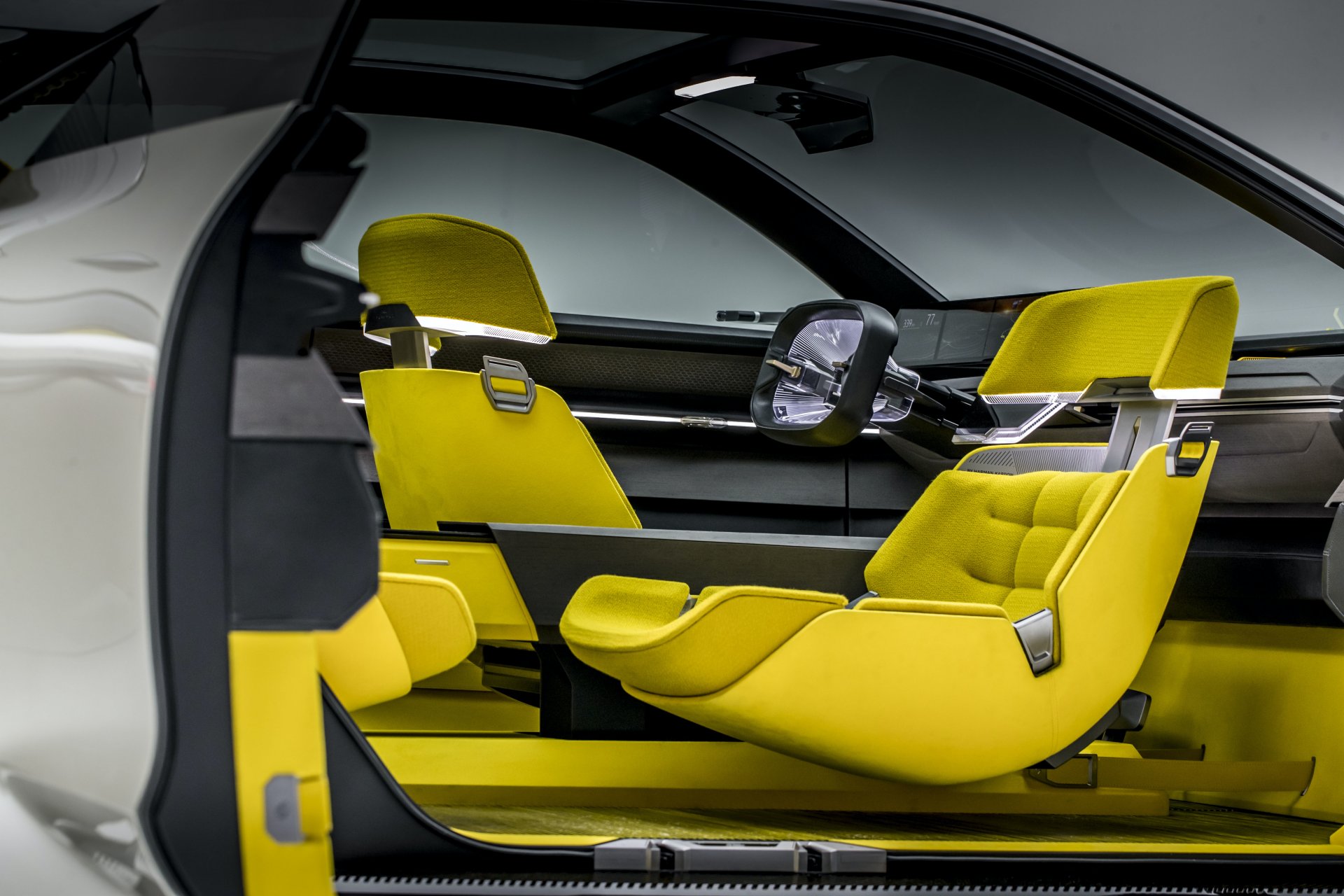











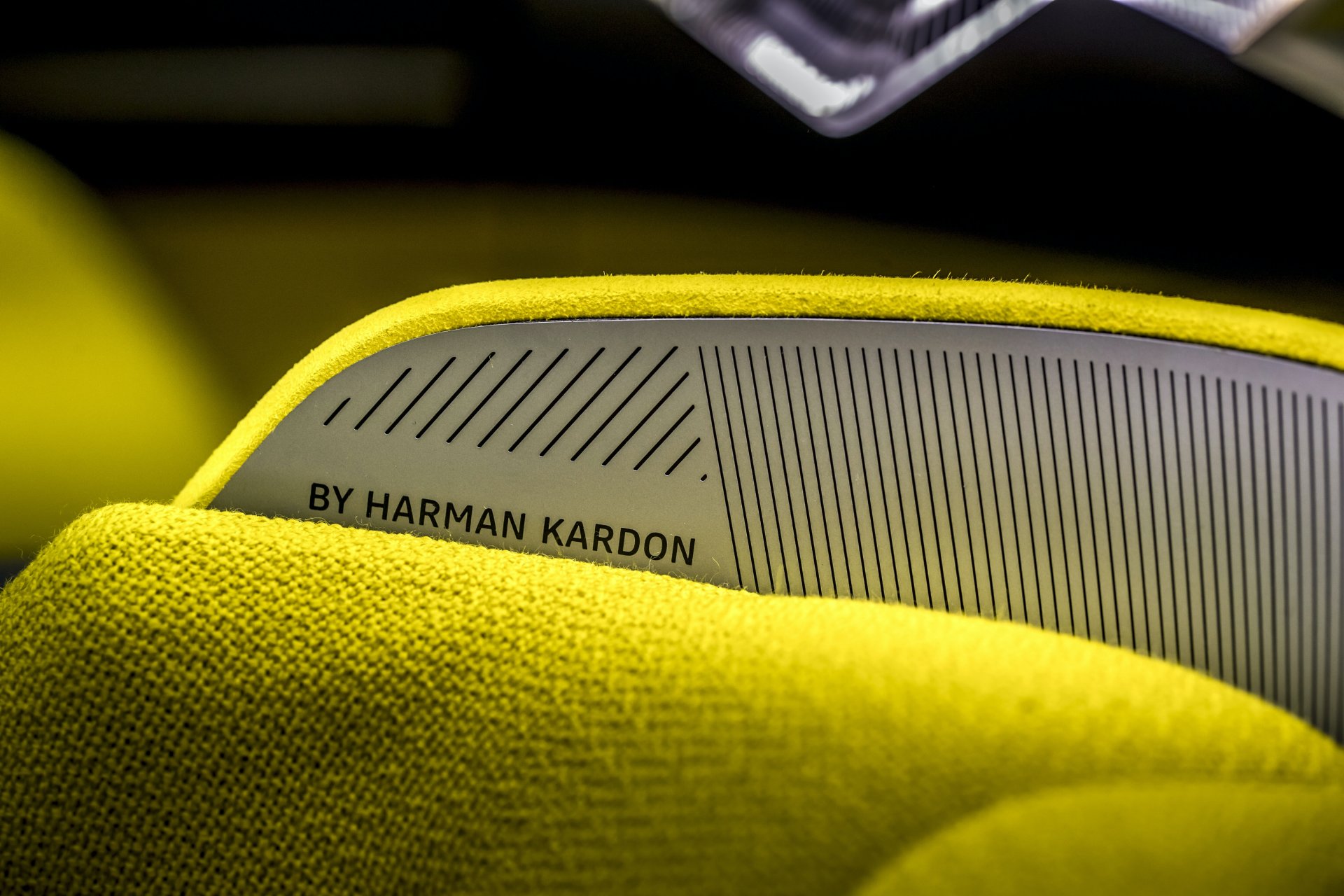
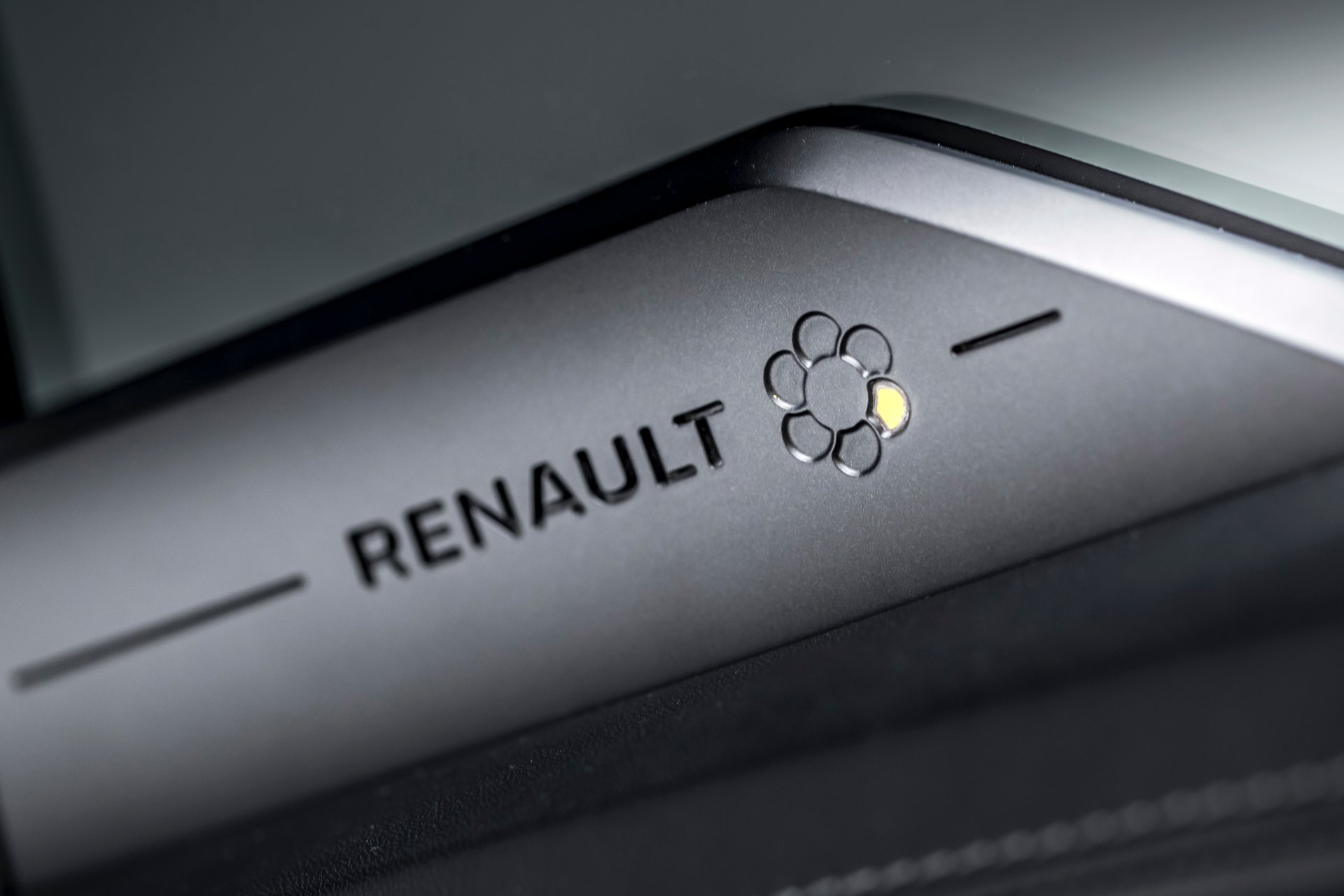












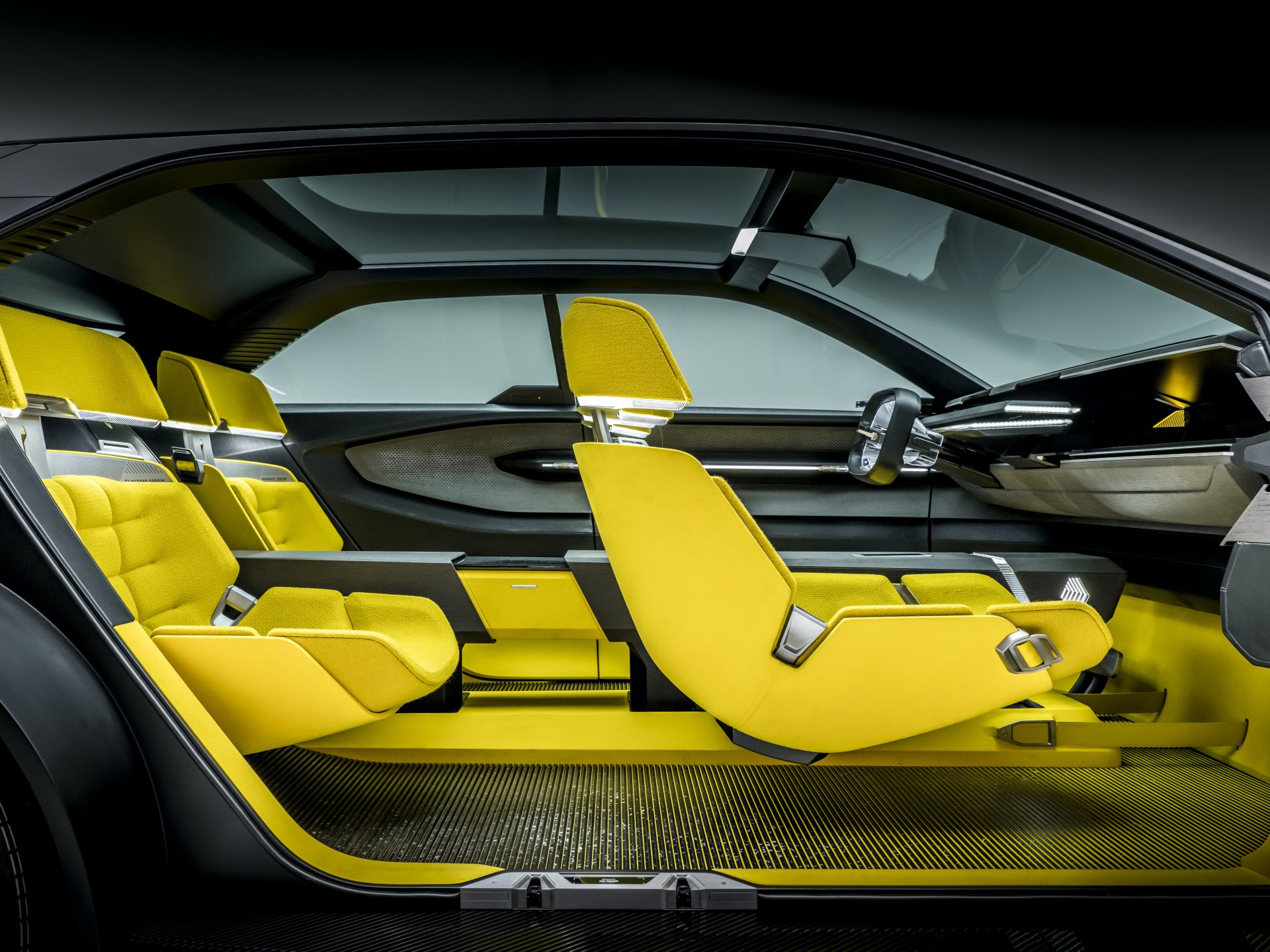































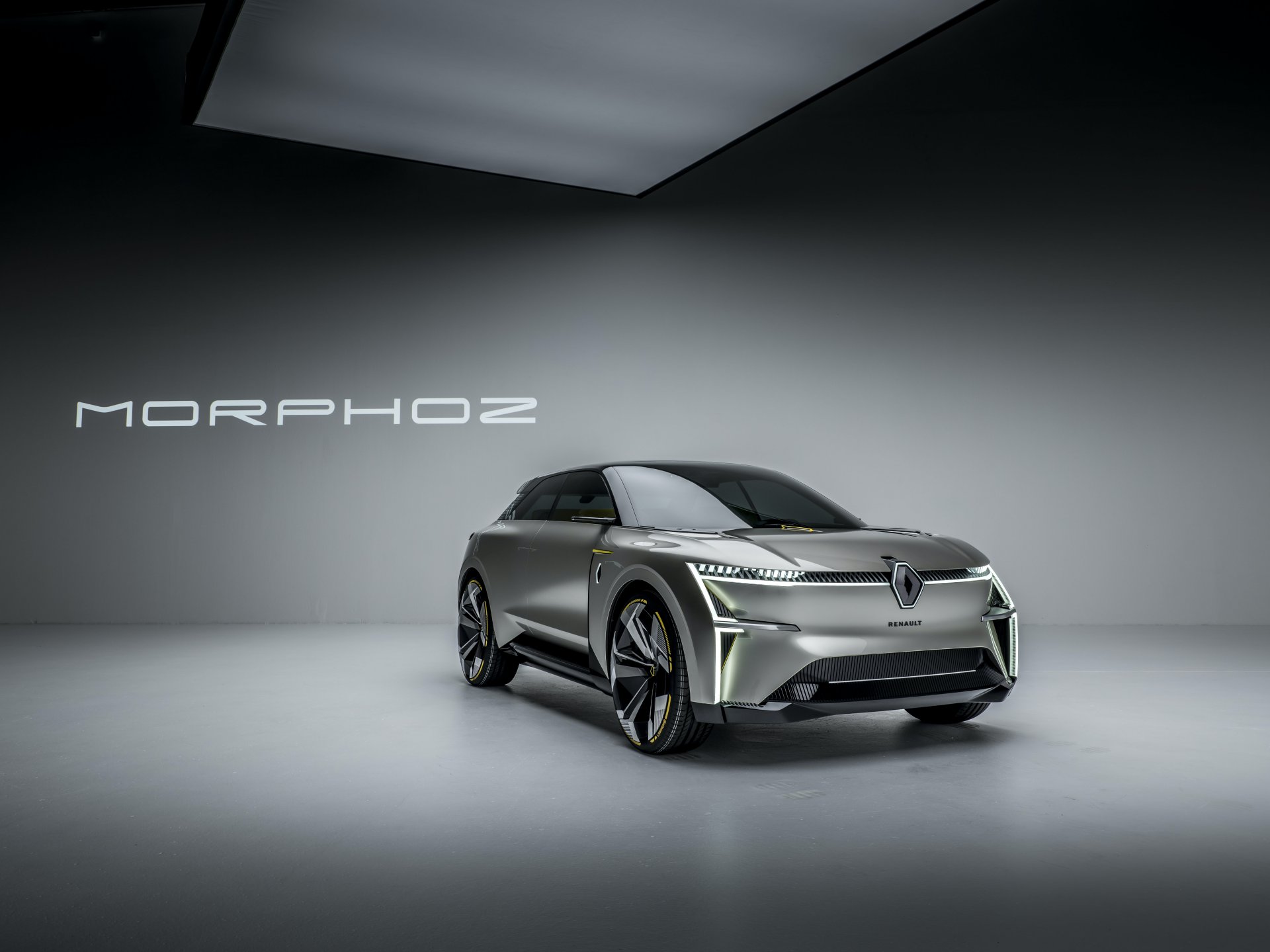














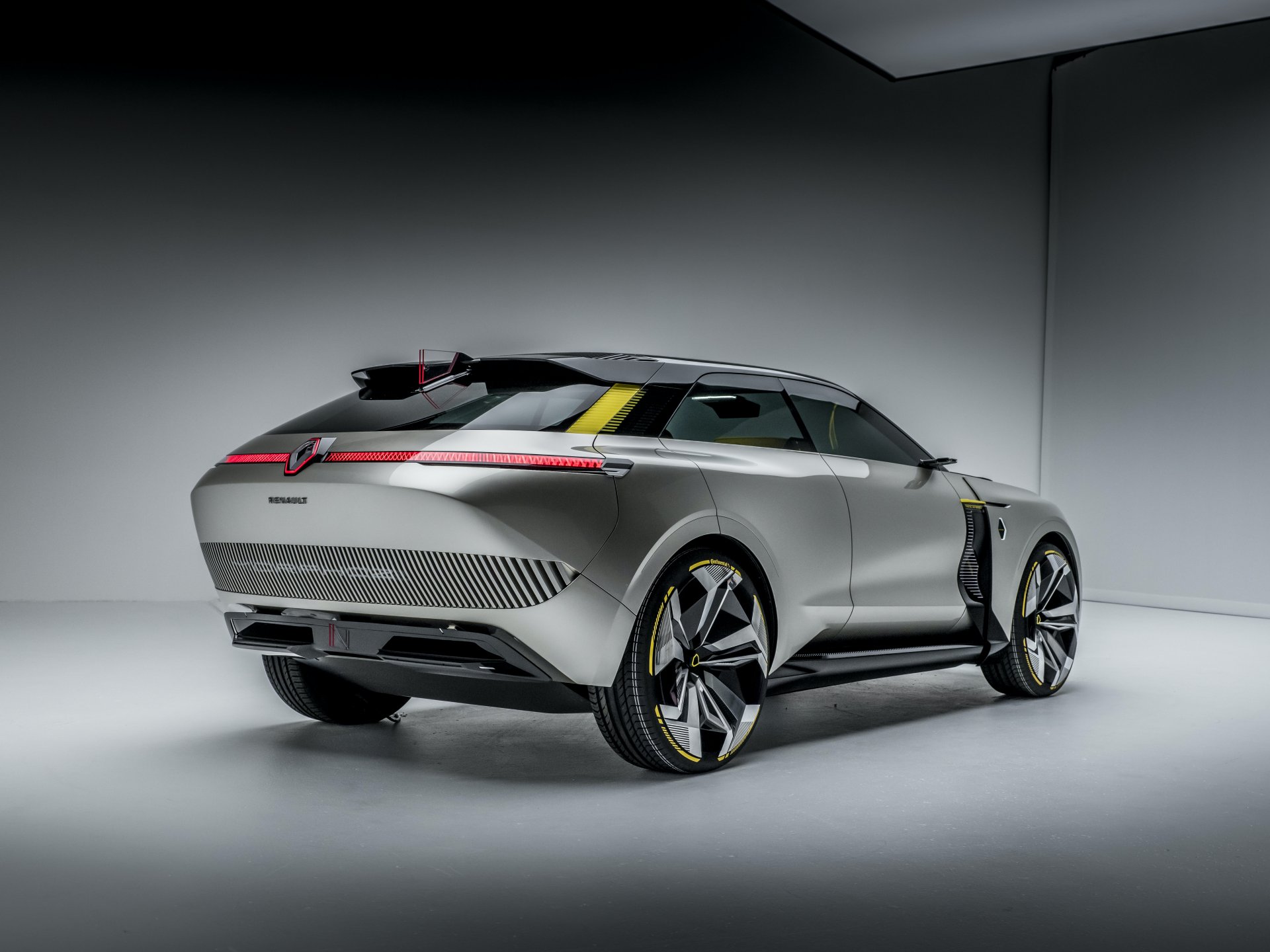






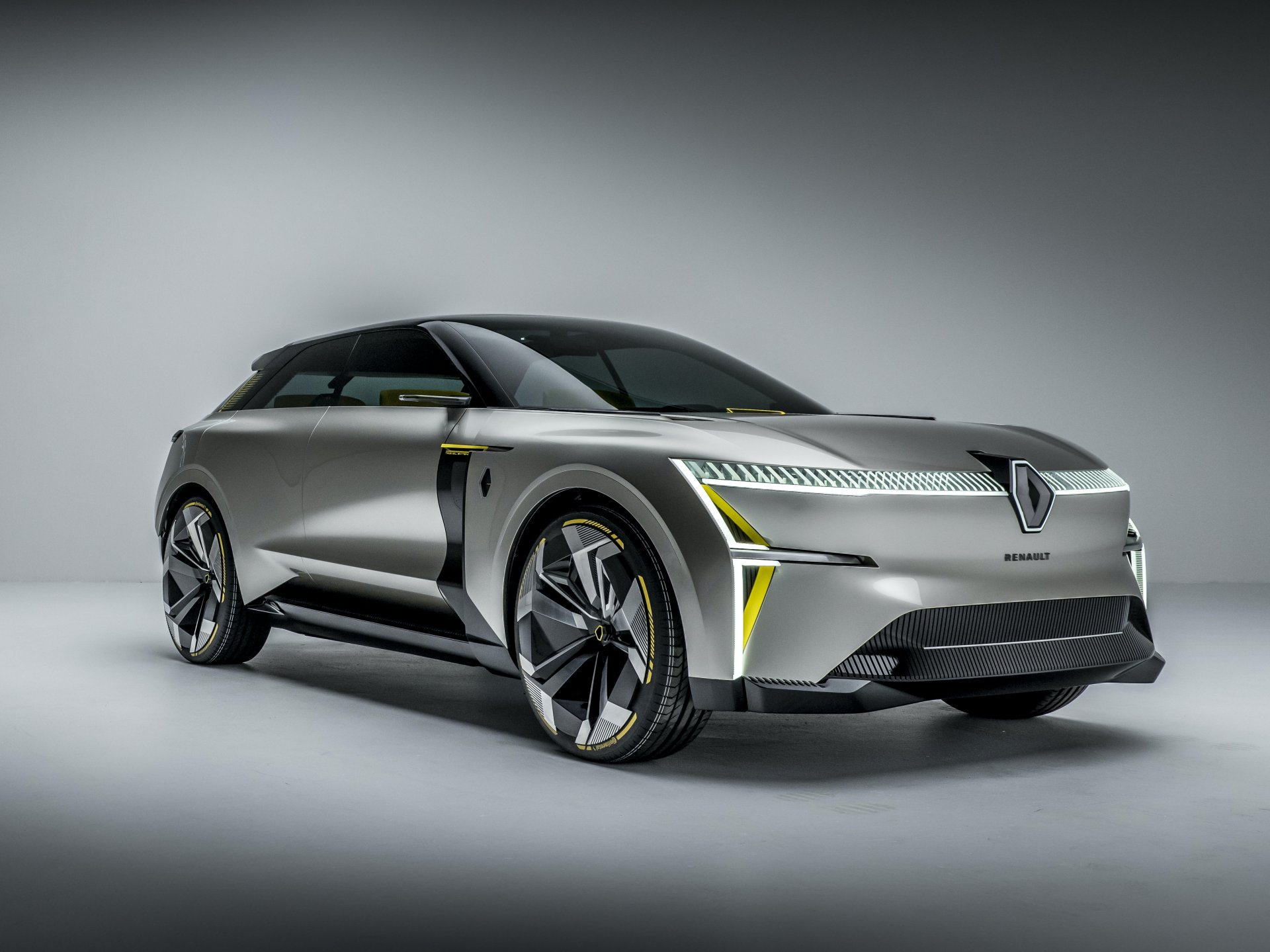









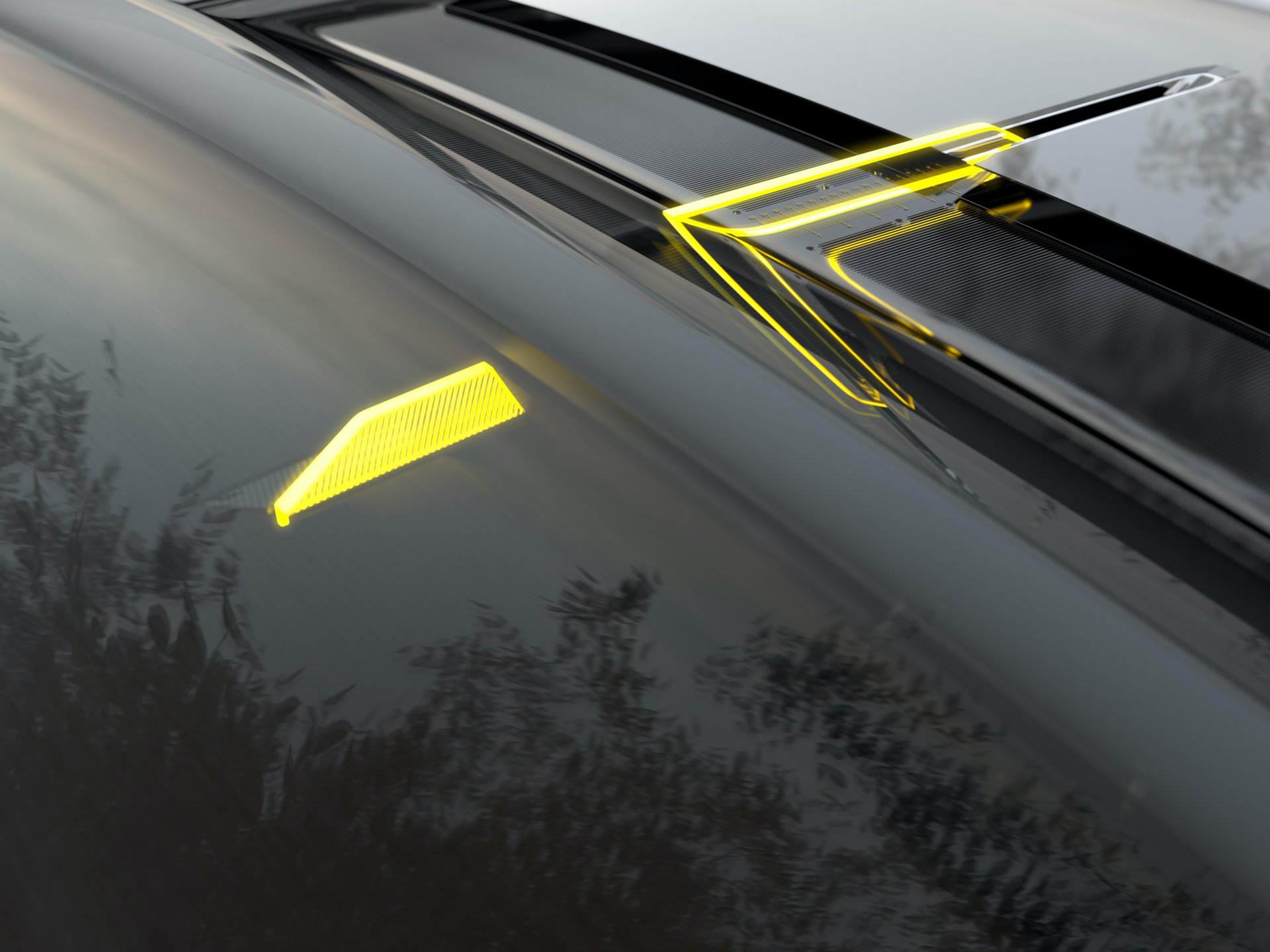



















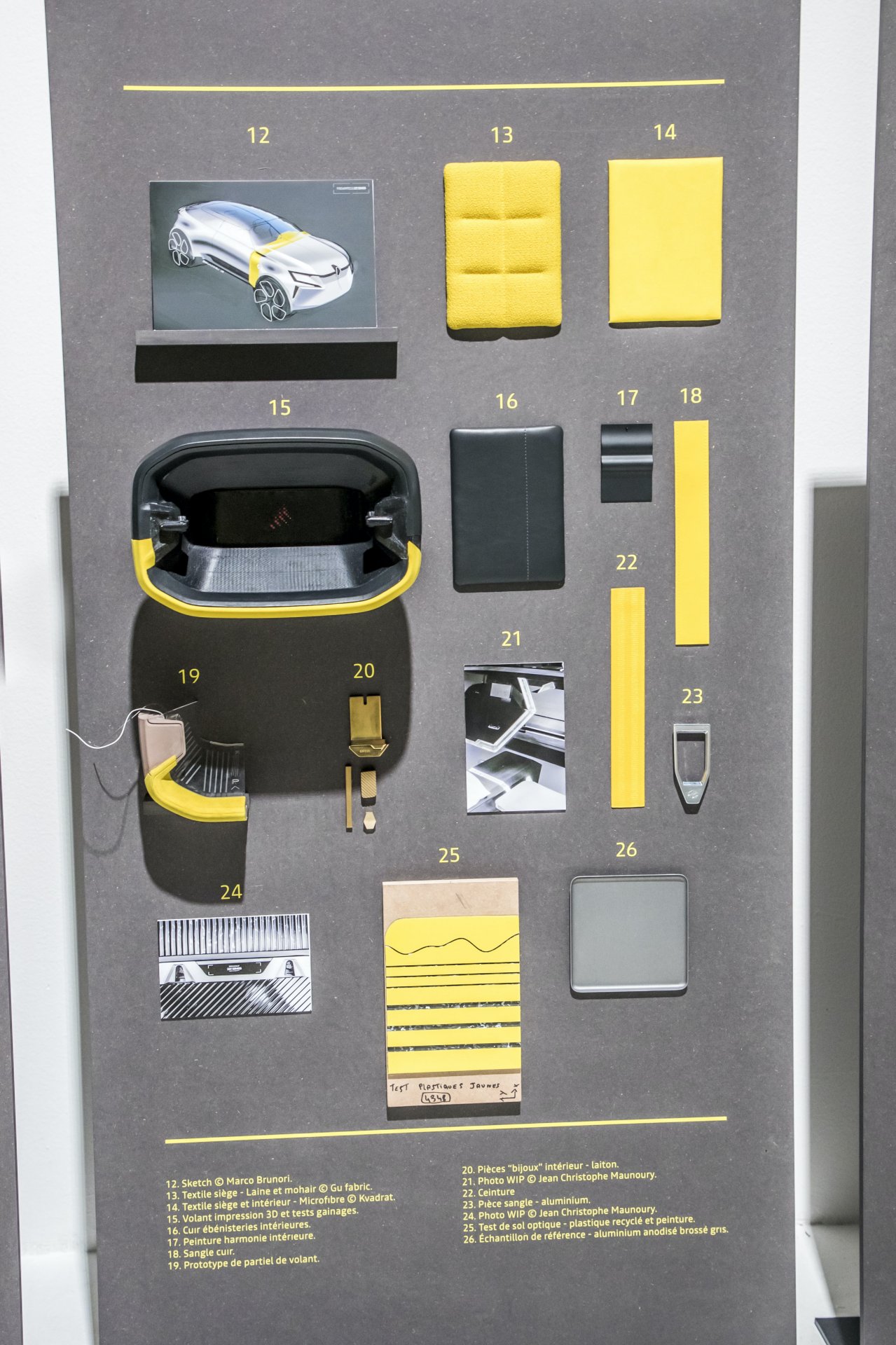

Comments
Post a Comment